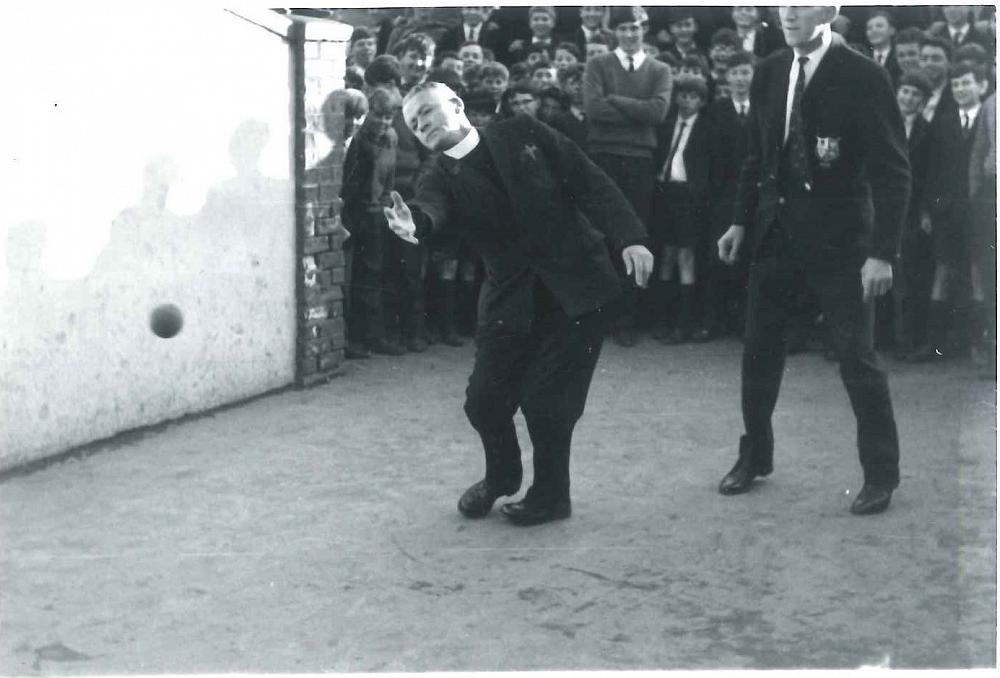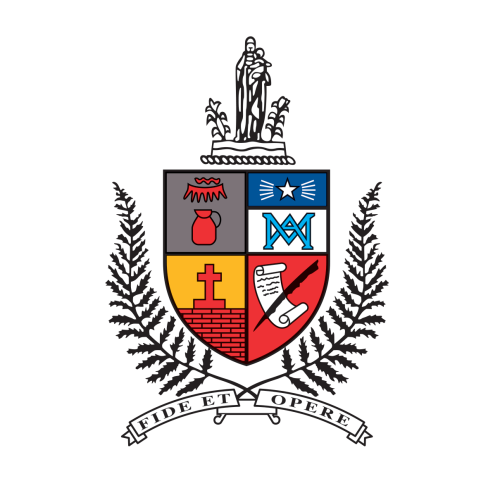
Reflections
Fives...more exciting than Football and Cricket?
The original Fives Courts were built in the early 1920s behind the Chapel, where the gymnasium used to stand. It was an extremely popular game, even threatening to overtake cricket and athletics.
From an article written in the 1948 Bedean. “Fives is certainly the most popular game at St Bede’s. The sound of the bell never starts a stampede of feet for the football field or the cricket nets, but it does make all traffic routes to the concrete courts dangerous for the leisurely traveller. What a din there is for a few moments until the shouts of “first on” and “my ball’s on” have died away.” If you were lucky enough to be the first player on the court you could then give "first pref" for the next game, that is you could choose who would get the court next.
In 1952 they wrote ‘Entries this year in the competitions reached the record number of 160, making each winner’s task the more formidable.” The championships were played in the last term of the year, which was term 3. If you became a Fives champion, this was a notable achievement and there were trophies for juniors, intermediates, and seniors.
It is thought that the name originates because it was played with the hand and is referring to the fingers as “A bunch of fives”. An early version was played by villagers in Medieval England, against the walls of the Chapel and centuries later by several Public Schools including Eton College, who from approximately 1840 in England, set more rules around the game.
Fives is remarkably like Squash, but without a wall behind the players, or a racquet, the only equipment that the boys needed was a tennis ball. The tennis ball however had to be shaved down to the rubber and rumour has it that certain rubber colours were more desirable because they did not hurt the hand as much. Black rubber was harder on the hands, but the white or light brown rubber was good. Unfortunately, it was not until the ball was completely shaved down that the colour of the rubber became known and by then of course the ball was completely useless for any other game than Fives. The shaving down of the balls was a serious task and it has been said that this was often carried out in class using the perforated lid of the metal compass box as a sieve. They were also shaved down by rubbing the ball along the concrete or the bricks of buildings. So, after all this preparation, how was the game played?

The object of the game was to hit the ball against the wall in front of you, using only your hand. To score points, your opponent had to either miss the ball, or not be able to return it. Your serve had to bounce off the front wall on your opponent's side of the court. If it bounced and lodged under the end of the buttress, (the brick edge protruding from the wall seen in the photo above), this would make it impossible for your opponent to return the ball, earning you a hard-won point and the slang term of “tinny”.
In the 1960s, there were also "Ball Hocks", cheeky 4th Formers (Year 10) who would wait at the Senior courts for a ball to bounce out. The 4th Former would scoop up the ball and throw it to a waiting mate. This boy would throw it to another mate until it was on the front field, being thrown from boy to boy, with the senior trying to get it! Once the senior had it back, the game could begin again.

During the 1950s and 1960s, the roll at St Bede's was expanding and so was the popularity of Fives. As a Golden Jubilee Gift, the Old Boys' Association gave funds to build 7 new courts where the PAC Centre now stands. In 1973, the 3 original courts, in the inner quad where the championship games had always been played, had to be demolished to make way for the new Grimes Building. 3 new courts were built with the new Squash building, at a cost of $100 000 with the Old Boys' Association contributing $50 000.
Although the newer courts were used extensively, by the 1980s, the popularity of the game had diminished and eventually the courts fell in to disuse and were demolished. The last names to appear on the trophies were in 1975, Guy Armstrong winning the Frank O’Connell Cup for the Senior championships and Richard Pascoe the Walsh Cup for the Junior championship.
The game of Fives may not be a game played at St Bede's today, but it is certainly a reflection that will bring back good memories for those who remember shaving down the tennis balls and the cries of “first on”.
In each newsletter we plan to bring you a reflection from St Bede's. These reflections will be of the people, artefacts and facts of our school. We invite you to share your stories with us at oldboys@stbedes.school.nz
